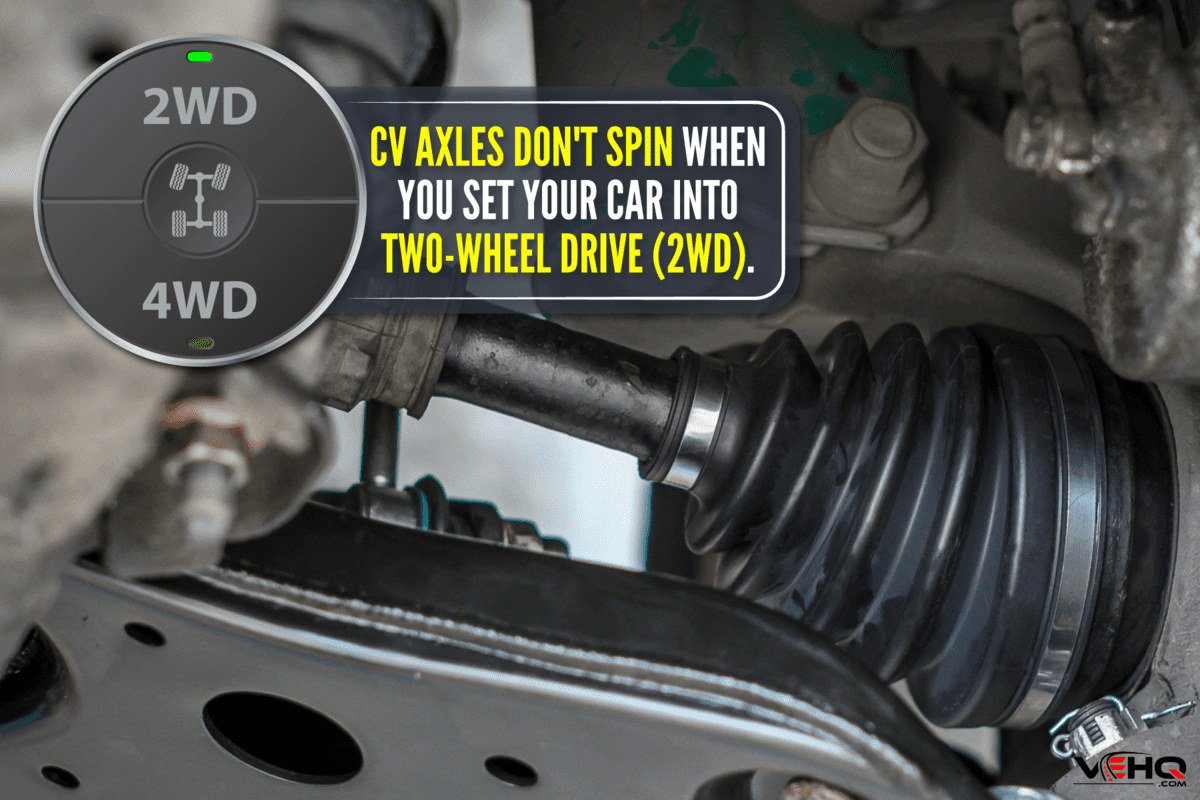Are you wondering if CV (constant velocity) axles spin while the car is in 2WD mode? We've researched the answers to your questions about how the axles operate in two-wheel drive.
No, the CV axles don't spin when you set your car into two-wheel drive (2WD). It's because you cut off the power from the transmission box, causing the front driveshafts to disconnect energy from the axles.
In this article, we'll discuss how the CV axles work in a 2WD. We'll elaborate on the car's performance when the CV axles spin and what results to expect. Join us in reading!
Do CV Axles Spin In 2WD?
No, the CV (constant velocity) axles in a two-wheel drive (2WD) don't spin. Switching to 2WD will cut off the transmission flow from the transmission box to the front driveshafts. To better understand, CV axles refer to the axle or metallic rod that transmits the power to cause the wheels' rotational motion.
When shifting into drive mode, the engine's torque is transferred via the transmission to the front wheels. The differential and CV axles put the appropriate wheels into action.
Power transmission in a straight line is simple, but suspension and steering movement necessitate flexible driveshafts and axles. Then, the movement and power transmission are enabled by the CV axles.
However, in 2WD, the front driveshaft will not freely spin. When your vehicle is in motion, your front axle and driveshafts are always locked and spinning. On the other hand, engaging the 4WD in the transfer case conducts power to the rear wheels.
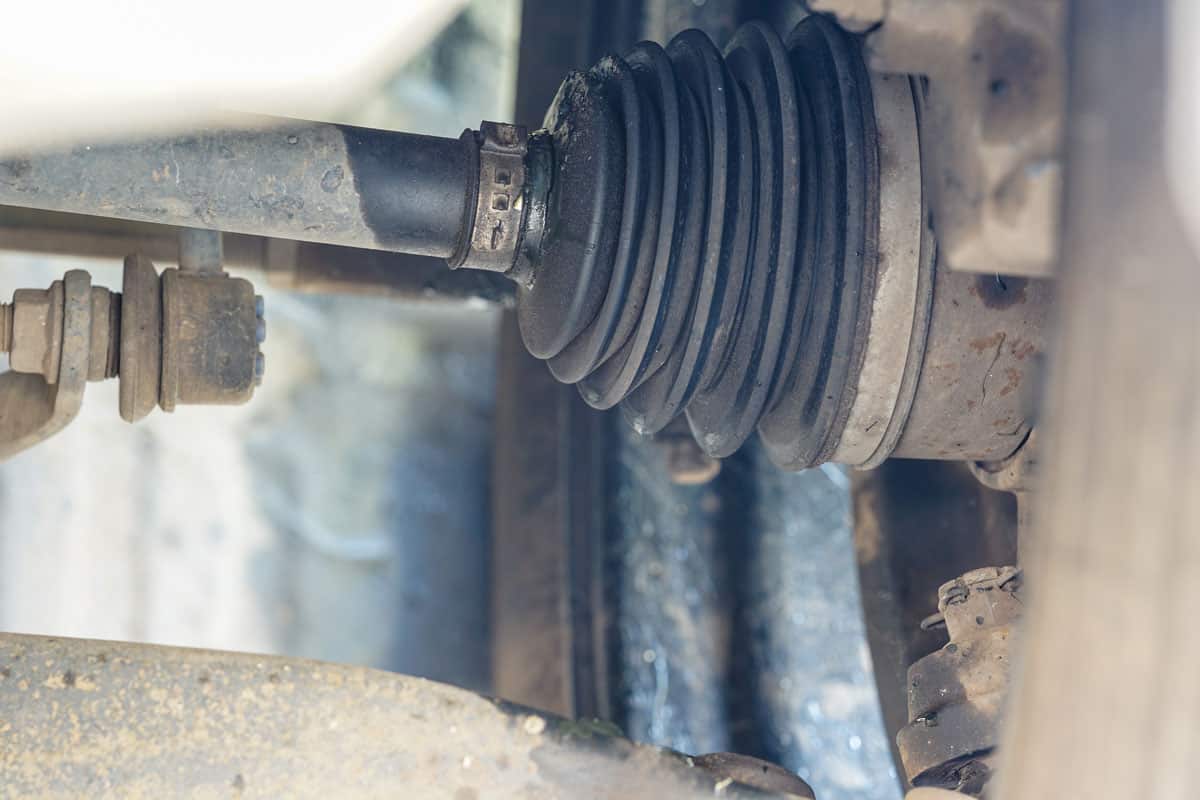
Do CV Axles Spin in 4WD?
Yes, the CV joints go along with the wheels' rotating motion, causing the CV axles to spin too. The car's movements while in 4WD will basically trigger almost every component to move along with the motion.
Do All Cars Have CV Axles?
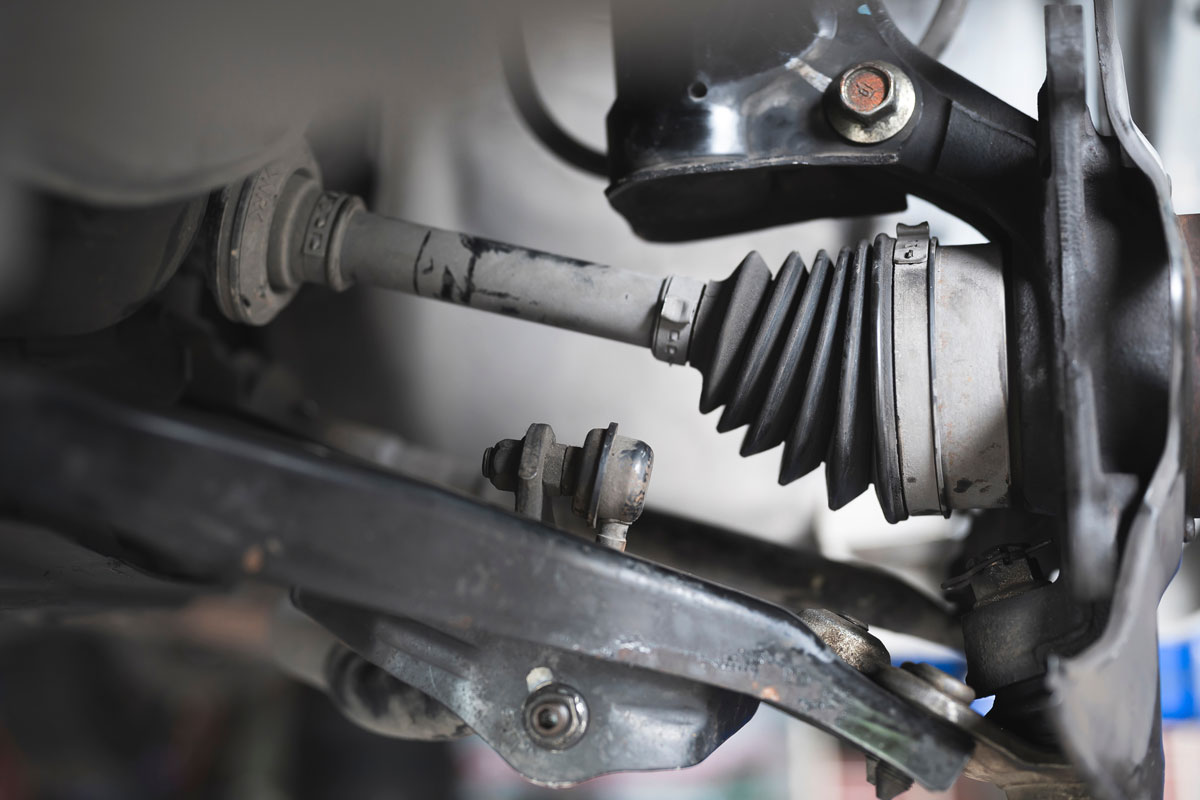
Most modern car models have CV axles. To help you find out what the CV axles look like, simply follow the steps below on how to identify CV axles:
- Take a look beneath your car.
- See the front wheels and find the rod between them.
- Check if the rod has two rubber boots or clamps on both ends, making them look like a barbel.
- See if the rod connects to the shorter rod before the wheels.
- Touch the other end of the rod to find the roller.
- Now repeat the steps to see if the rear wheels also have CV axles.
Do Your CV Axles Need Replacement?
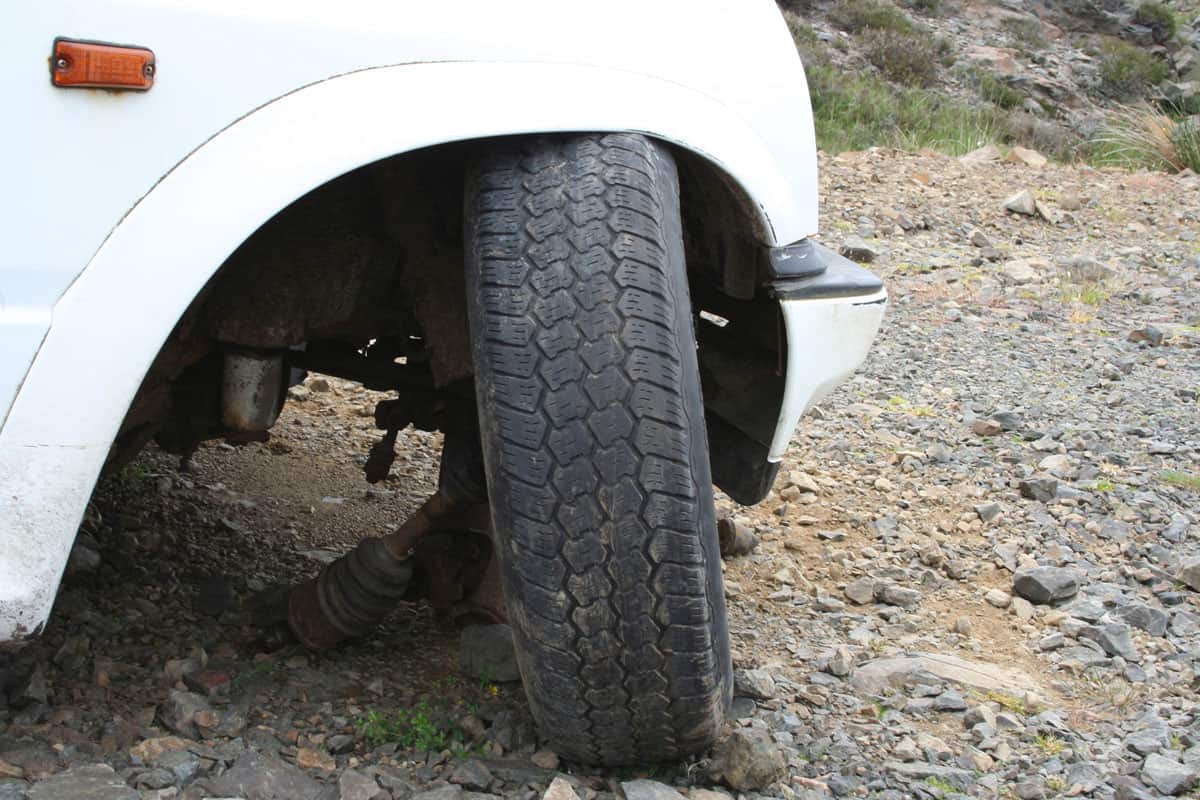
It's not safe to drive with a broken axle or any other components. So, check below some signs your CV axles need replacement.
Car Doesn't Move
If the car doesn't move when you try to drive, you might want to check the axles beneath it. A broken axle will restrict the wheels from turning. See if its rubber boots are torn apart.
However, make sure the car has enough power from the battery and fuel before you conclude that the axles are broken.
Leaking Grease
You might see the grease leaking beneath the car either due to excessive rust or dirt. The car's underside could be just too dirty that you mistake it for having a broken axle.
Otherwise, there might be some broken parts. Check if the grease comes from the rubber boots of CV axles, which could leak through the internal side of the front tires. As mentioned, the rubber boots are filled with grease, but it should not be leaking. The impact of driving can be causing leaking.
Unusual Noise
Test the car by driving a short distance. If you hear a cranking sound coming from the tires, then it's possible that the CV axles got dislocated or need tightening.
Also, you'll notice the noise getting faster and louder when you speed up the car. If the noise doesn't stop after a few days, then this is an obvious sign your CV axles need replacement.
How to Replace CV Axles
Remember that it's still best to ask a mechanic before replacing the CV axles by yourself, as your car might need suffer other issues. See the steps below:
- Loosen the hubcap and axle nuts.
- Use a car jack to lift the car a bit higher, then pull the wheels out.
- Unfasten the brake caliper with a wrench.
- Loosen the outer tie rod, then detach it from the steering wheel.
- Unbolt the hub from the strut tower.
- Now, use a screwdriver to pry the CV axle out from the joint where it meets the transmission.
- Attach the new CV axle into the transmission housing.
- Insert the new CV axle into the hub assembly.
- Put everything back to their positions by reversing the way you remove them, including the wheels.
- Remove the car jack, then test the car by driving a short distance.
Can You Lubricate CV Axles?
Yes, you can lubricate the CV axles to allow another rotation of the wheels. To do so, simply follow the steps below:
- Carefully remove the battery from the terminal.
- Unfasten the bolts to remove the wheels.
- Detach the brake caliper and other components until you reach the CV axles.
- Access the axle assembly with a screwdriver or a pry bar.
- Pull the rubber boot, then drain the existing lubricant.
- Use a small brush to clean the dirt around the axle.
- Now, lubricate the protective layer with a grease gun.
- Reassemble the car parts.
How to Switch into 2WD
Switching to 2WD is simple, yet you need to ensure your car has this function. The steps may differ on the car model. However, you can check the general steps below:
- Slow down the car while you're driving. You can also stop it if the car is an older model.
- Shift into neutral mode.
- Disengage the four-wheel drive mode, then switch into the two-wheel drive mode option.
What Happens to a Car When in 2WD?
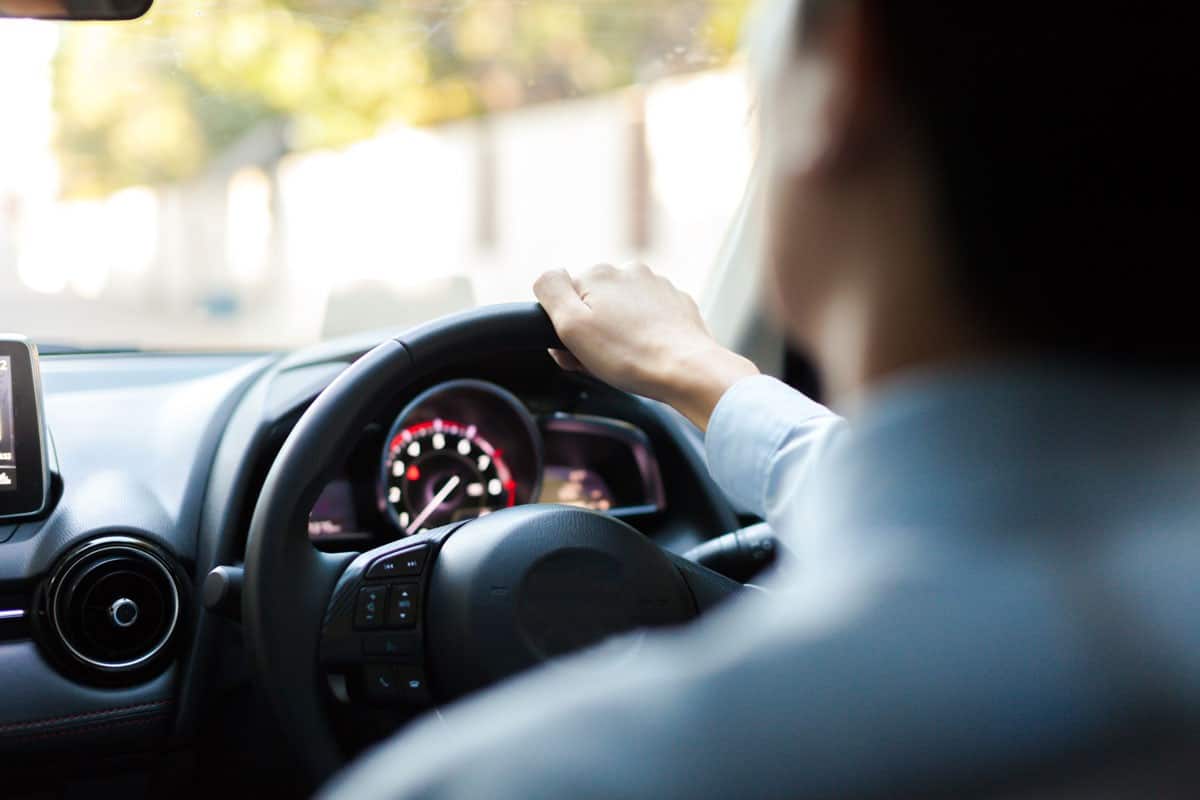
Two-wheel drive mode means that only two out of four wheels are functioning. Some cars have 2WD mode, where the front wheels are active, while other cars have their rear wheels active using 4WD or AWD modes.
In 2WD-equipped cars, the overall vehicle weight is lighter. The engine also needn't work as hard to power all four wheels, as it is only propelling two (either the forward or rear wheels). Therefore, 2WD cars tend to be more fuel efficient.
It is also most fuel-efficient to operate in 2WD when able if your vehicle is 4WD-equipped. You should also be aware of the circumstances when 4WD is most useful by referring to your owner's manual.
Common Types of CV Axle Joints
It's good to understand some common types of CV axle joints. Joints are the components attached to both ends of the axle. Refer to some types below.
Tripod Joint
A tripod joint transmits constant torque and speed when you change your driving direction, resulting in a consistent power transmission.
It also consists of rollers attached to a three-part yoke fitting inside a cup with grooves that connect to the differential. The rollers are positioned at a 90-degree angle to each other, moving back and forth on tracks inside the housing.
Rzeppa Joint
It consists of six balls rotating along with the angle of the car. The balls will follow the direction wherever you turn the wheels. Rzeppa joints are used to reduce misalignment to the shaft coupling and to other car components. They can operate for 48 degrees angle or higher.
Plunge Ball Joint
The cross groove allows the transmission of rotational torque between the rotating shafts. On the other hand, the double offset joint has an extra dimension for in-out movement when the suspension moves up and down.
Do CV Axles Spin in 4WD?
Yes, the CV axles spin in 4WD, as the CV joints need to move along with the wheels' rotation. However, the manner of driving can change the speed of rotation. Expect the CV axles to spin faster when in a downward slope, for instance.
Conclusion
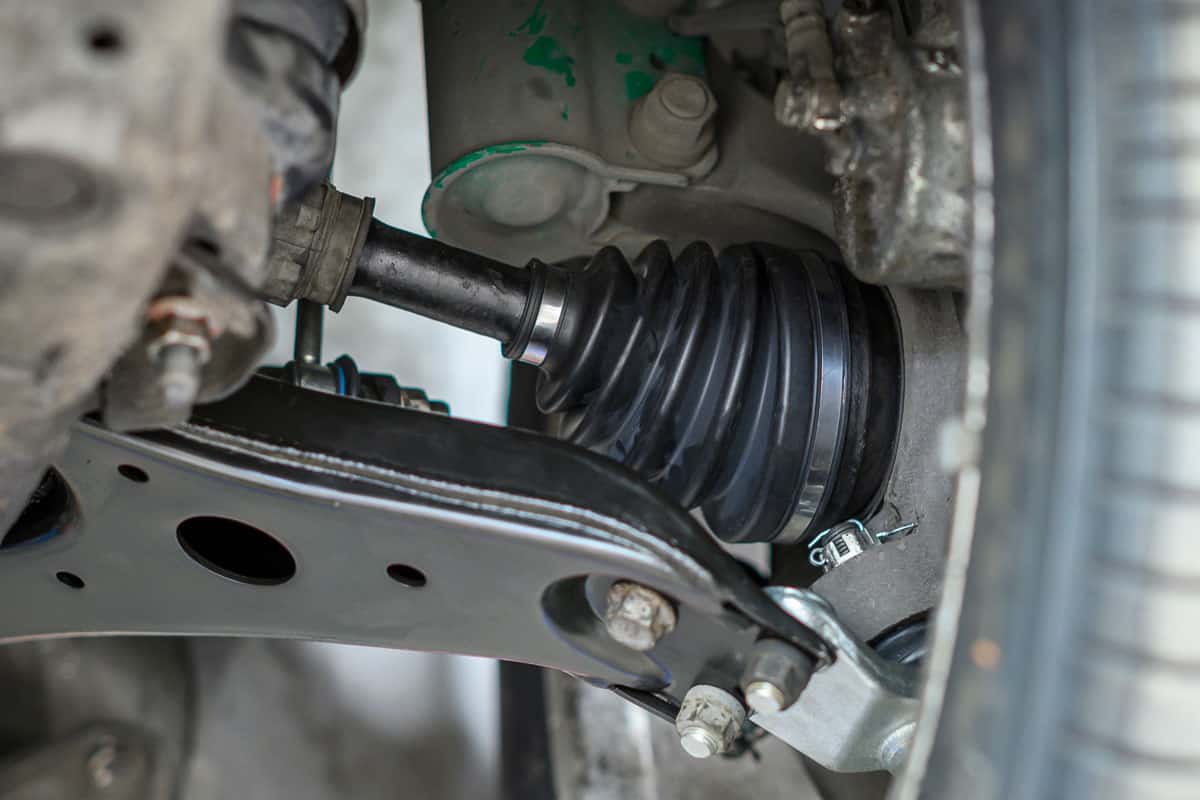
It's another useful article in which we learned if the CV axles will spin when in a two-way driving mode or 2WD. We then discussed other relevant matters such as signs your CV axles need replacement and how to switch to 2WD. It’s best to refer to the user manual for more specific details about your car’s components.
Do you want to learn more? Visit us here:

